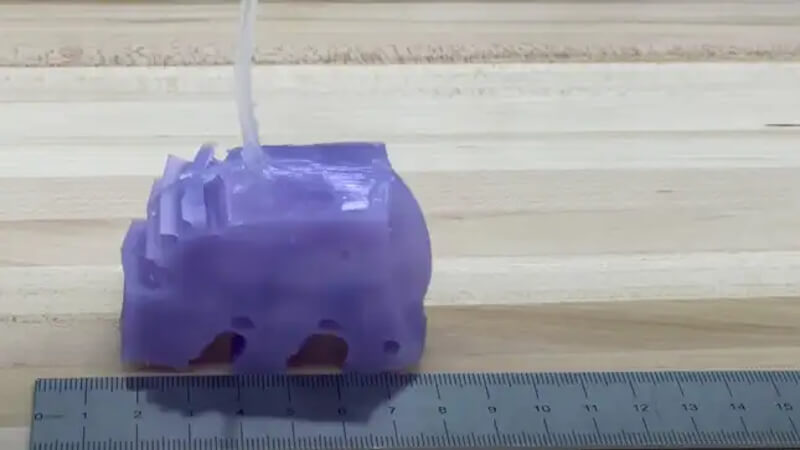Based on a task, an AI went through evolution in under 30 seconds. The result is a purple lump that can move on its own.
As in every previous century, humanity is currently facing challenges. Compared to previous generations, however, we have a gigantic amount of computing power at our disposal to solve the problems. Above all, technologies based on artificial intelligence promise solutions.
Researchers at Northwestern University have also recognized this. They gave an algorithm a simple task. The AI was to design a robot that could walk. After just a few seconds, the system spit out a solution that bears no resemblance to structures ever explored. For it is a purple lump.
Artificial intelligence completes evolution in 26 seconds
Using oddly shaped legs and air, the structure moves forward on its own. The researchers describe the development of the lump as an evolution that took place in just a few seconds. This is because the first version looked like a bar of soap and consequently could not travel any distance.
But with the almost infinite knowledge of an artificial intelligence, the system evolved the first version and went through various theoretical forms. In the end, the lump emerged, which the researchers printed out on a silicone base in a 3D printer. In total, the evolution in the algorithm took about 26 seconds.
AI design decisions open up new possibilities
But the final result also revealed some astonishing design decisions. Not only does the lump have misshapen legs, but it also has irregularly spaced holes on the back side. The researchers don’t know why, but removing these holes meant that movement was no longer possible.
The team emphasizes that AI systems can already provide input than suggest novel structures. As a result, advanced robots and structures could emerge that differ from today’s designs. So the next stage of evolution could take place in the computer.










